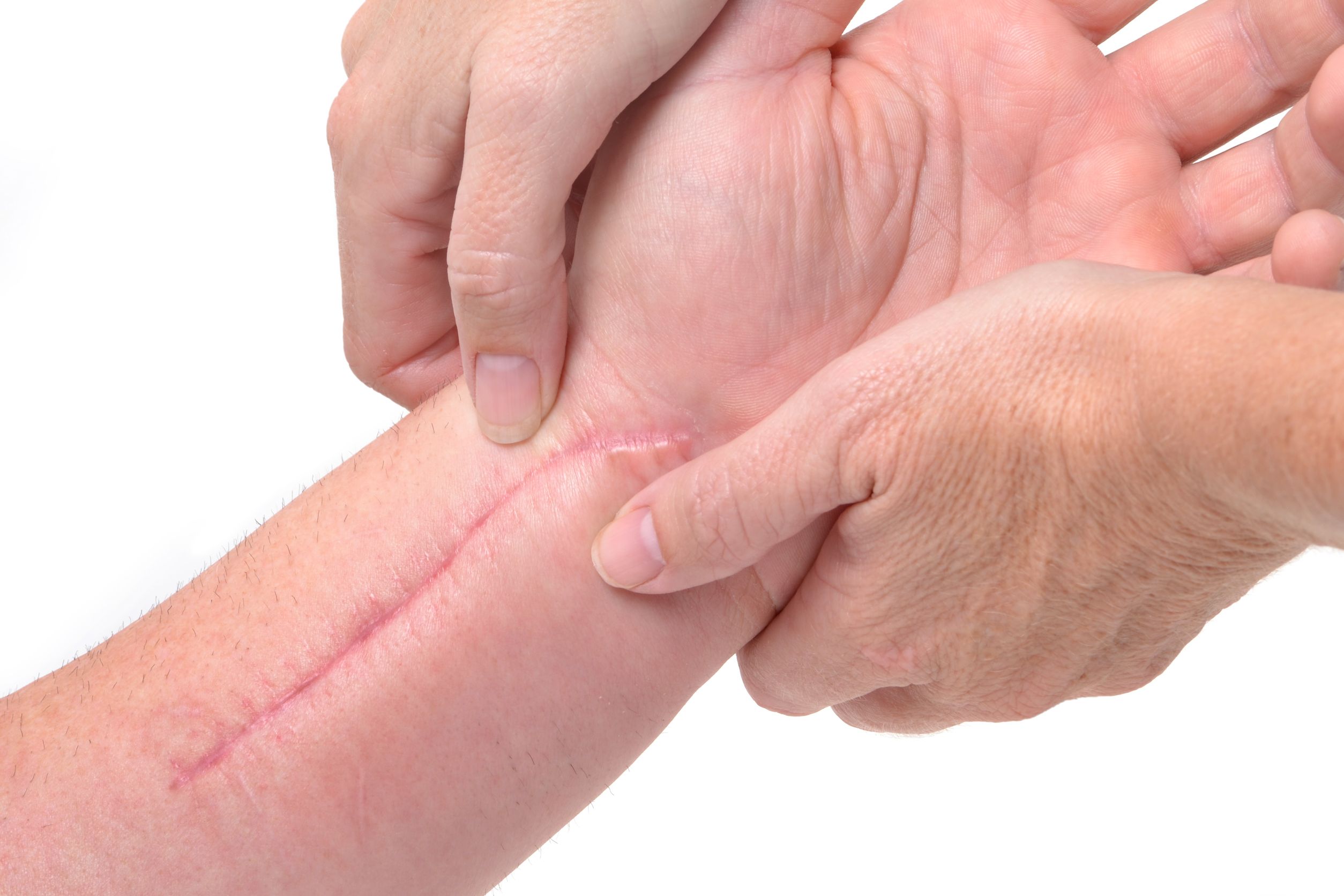
23 Apr Hypertrophic scars: What they are, how they’re caused and how to treat them.
It would be uncommon to find a human past the age of infancy that hadn’t obtained some instance of scarring on their body, and amongst the types of scars we accidentally adorn ourselves with, is the hypertrophic scar.
So what makes the hypertrophic scar different from its peers? In terms of looks, the hypertrophic scar is usually red in colour and slightly elevated. They can become quite itchy or, in some instances, even painful. Unlike the Keloid scar, however, hypertrophic scars don’t spread outside the initial area of injury.
Typically the hypertrophic scar starts to develop in the following weeks of an injury, and their appearance can slowly begin to improve naturally. This can be dependant on the nature of the scar’s cause, however, and can take upwards of a year.
Causes
Speaking literally, hypertrophic scars are caused by injury, as with most scars. Common injuries or occurrences that may result in hypertrophic scars are body piercings, burns, cuts or even pimples. Scientifically speaking, hypertrophic scars are usually caused by injury to the deep layers of the skin tissue called the dermis. The elevation typical to the appearance of hypertrophic scars is caused by the body creating excess amounts of collagen to repair the injured skin.
Treatment
Despite the fact that hypertrophic scars can start to improve in appearance over time, it is still worth looking at other treatment options which can aid the process. These are the options that are currently available:
Non-Invasive:
Silicone Gel Sheeting, e.g. Dermatix®
A simple yet effective method, the Dermatix® Silicone Gel Sheeting can be applied once a day and then be left for 12-23 hours without fuss. A favourite for its ease of use, the Silicone Gel Sheet is thought to work due to its hydrating properties, and can improve the appearance of hypertrophic scars dramatically from just 2 months use.
Pressure/Compression Therapy
Pressure and Compression Therapy works by applying pressure to the scarred area, which assists in increasing the break down of collagen. Different items are used to apply pressure to different areas of the body, for example thromboembolic stockings for the feet, or elastic bandages for extremities. Compression and pressure garments can also be custom made and fitted for the more complex areas.
Topical steroids
Topical steroids can be used to treat many skin issues, such as eczema, contact dermatitis and, of course, hypertrophic scarring. They usually come in a cream or ointment form, to be applied directly onto the skin to reduce scarring. They are available in different strengths; your General Practitioner will be likely to start you on the lowest dose and adjust as necessary. Topical steroids can also be referred to as cortisone or corticosteroids.
Polyurethane patches
Polyurethane patches are clear, self adhesive patches that can be placed directly onto the skin to aid hypertrophic scar reduction. They have been found to reduce the prominence and colour of scarring, but can be viewed as a burden when applied to areas of the body which might be subject to a lot of movement, for example near a joint.
Invasive
Surgery
Although it may seem drastic, once the non-invasive options of hypertrophic scar treatment have been exhausted, surgery can become an attractive option as it can be used to reposition or change the width of a scar. It is worth noting, however, that having surgery on hypertrophic scars can lead to the acquisition of a new scar in place of the old, which can subsequently take up to two years to improve in appearance.
Injected steroids
As soon as a problem scar is identified, steroid injections can be used as a treatment. The dose is altered according to the size of the scar (between 10-120mg) and is often desired in instances where application of Silicone Gel Sheets or Pressure Therapy may be more difficult, such as on facial scars.
Radiotherapy
This treatment involves the localisation of radiation to cells on the body, and can therefore be localised to the surface area of a hypertrophic scar. This form of treatment for scarring can be seen as a somewhat extreme measure, due to its links to radiation attributed cancers. It has, however, been found to be able to reduce the symptoms of hypertrophic scarring and prevent the growth of keloid scarring significantly.
Cryotherapy
The term Cryotherapy comes from Greek, where it’s literal translation is ‘cold cure’. As with pressure therapy, the aim of cryotherapy is to decrease cellular metabolism and increase collagen breakdown in the skin. In hypertrophic scars this can aid in reducing redness and their raised appearance.
Laser therapy
Laser therapy involves pulsating light onto the affected area, and like Radiotherapy can be localised to specific areas. This works by targeting the blood vessels in the scar tissue and decreases redness.
There are also other treatments that might be suggested for hypertrophic scars, however there is no medical evidence to authenticate them, they include:
Topical vitamin E cream (and other moisturisers)
Plant extract creams
Massage therapy
No treatment
UK/DER/14/0002e

